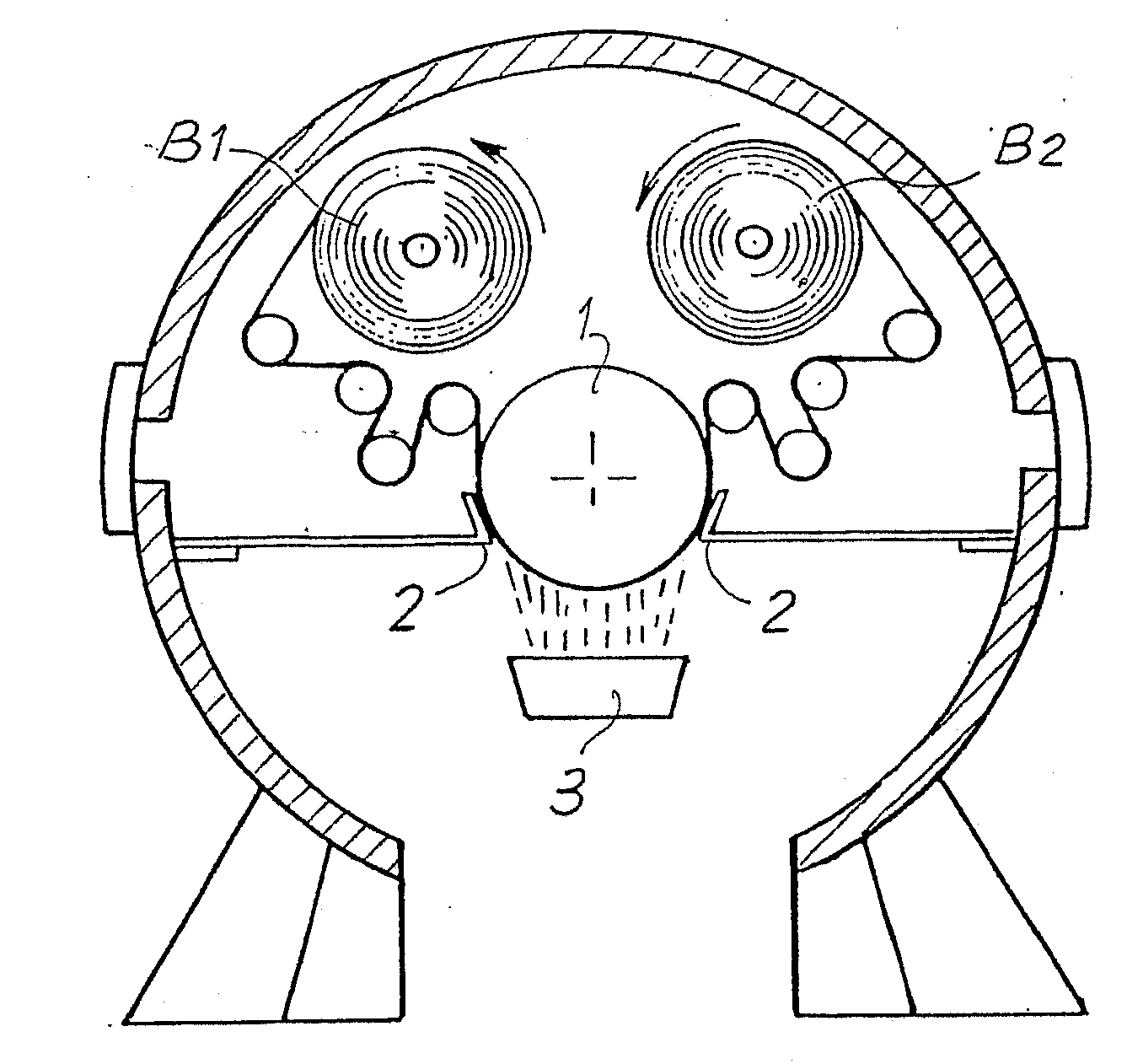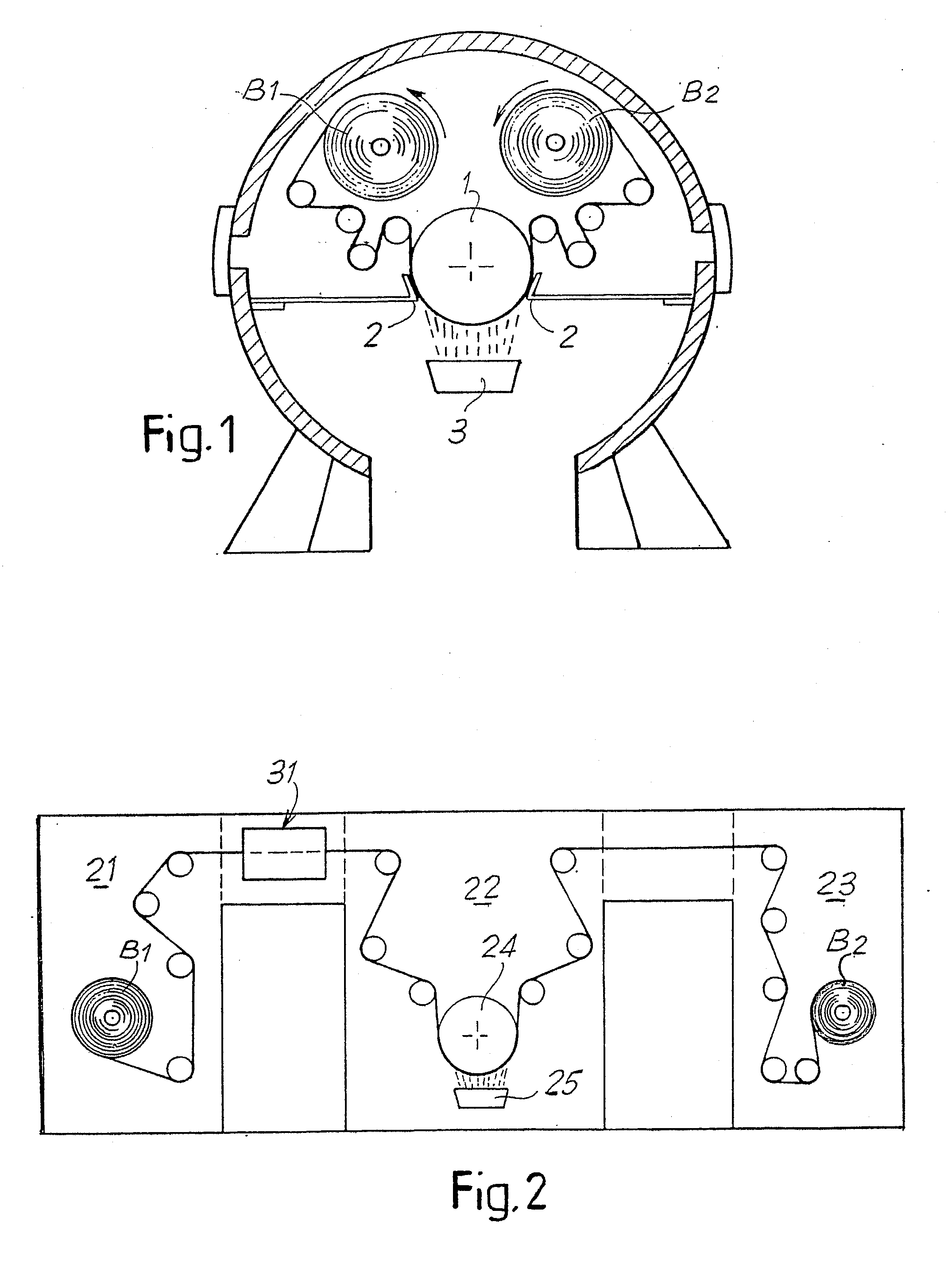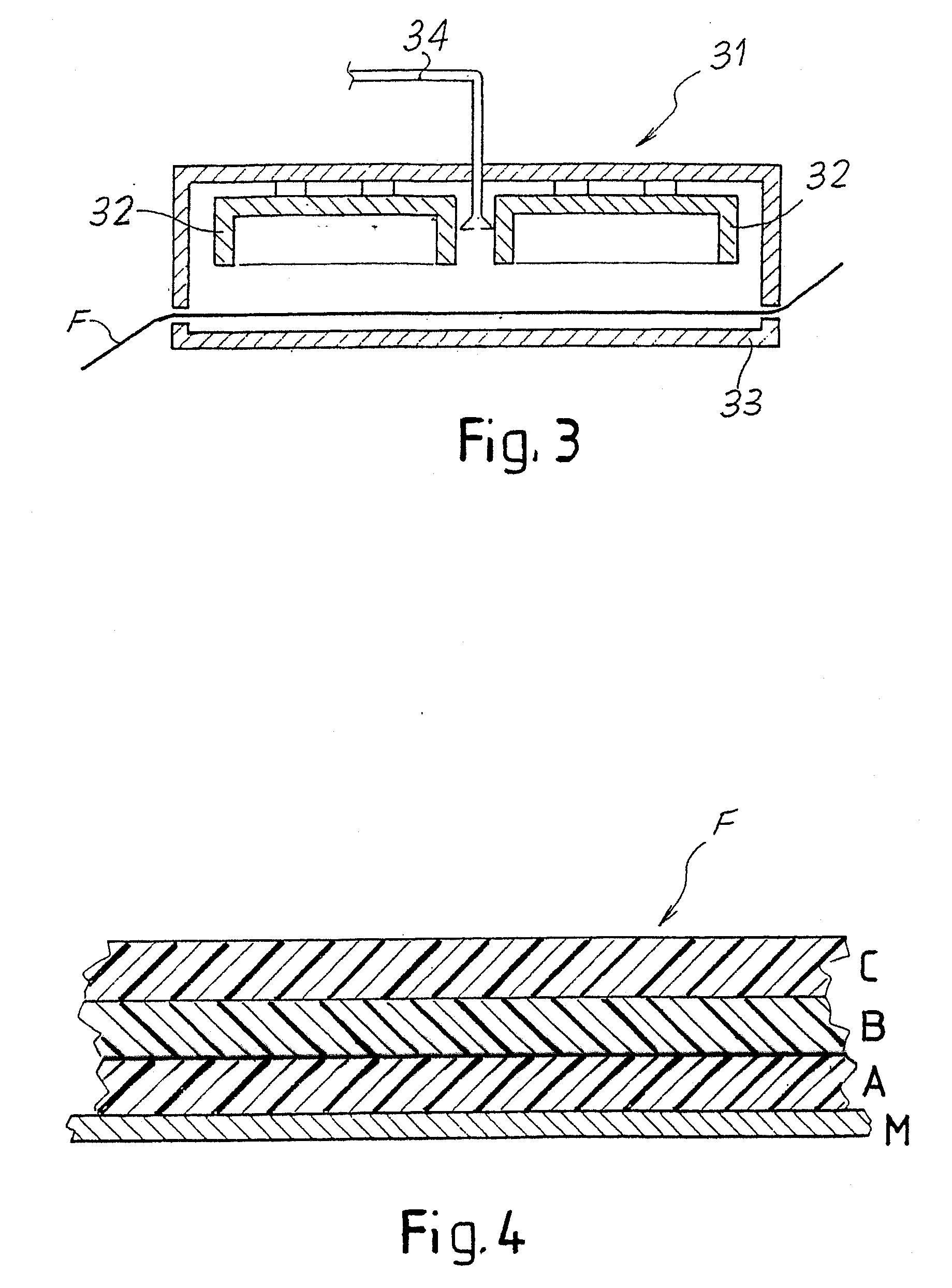Multilayer Metallized Film and Production Method Description
a technology of metallized film and production method, which is applied in the direction of film/foil adhesive, domestic articles, packaged goods, etc., can solve the problems of precarious use in packaging machines with working speeds above 20 m/minute, inability to protect and distribute all food products, and difficulty in initial sealing or sealing, etc., to achieve high oxygen and water vapor barrier effect and high level of adhesion of the metallized layer
- Summary
- Abstract
- Description
- Claims
- Application Information
AI Technical Summary
Benefits of technology
Problems solved by technology
Method used
Image
Examples
example 1
[0130]Structure A-B-C[0131]A propylene-alpha-olefin copolymer 100%, thickness 0.6 micrometers[0132]B isotactic polypropylene 100%, thickness 18.2 micrometers[0133]C ethylene-propylene-alpha-olefin terpolymer 100%, thickness 1.2 micrometers
Metallization conditions:
Metallization rate9 m / secondAluminum evaporation rate9 g / minuteO.D.2.7Degree of vacuum in the metallization chamber2.3 10−4 mbarDegree of vacuum in the plasma chamber2.2 10−2 mbar
Performances:
[0134]
OTR5.3 cc / 24 h m2 (20 micrometers) (after stress)WVTR0.044 g / 24 h m2 (20 micrometers) (after stress)Adhesion100%Pick off 0%Long. ME1800 N / mm2Trans. ME3200 N / mm2Seal1.8 N / cm
example 2
[0135]A-B-C[0136]A 80-20% mixture of propylene-alpha-olefin copolymer with AdstifHA712J[0137]B isotactic polypropylene 100%[0138]C terpolymer as in example no. 1 .
Thicknesses as in example no. 1
Metallization conditions as in previous example,
Performances:
[0139]
OTR3.5 cc / 24 h m2 (20 micrometers) (after stress)WVTR0.039 g / 24 h m2 (20 micrometers) (after stress)Adhesion100%Pick off 0%Long. ME1850 N / mm2Trans. ME3350 N / mm2Seal2 N / cm
example 3
[0140]A-B-C[0141]A Propylene-alpha-olefin copolymer[0142]B Mixture of polypropylene with melting point 157 / 159 C° with Adstif HA 712 J or AdstifHA612 M 60-40%[0143]C as in examples no. 1 and no. 2
Thickness as in previous examples.
Metallization conditions as in examples no. 1 and no. 2.
Performances:
[0144]
OTR3.1 cc / 24 h m2 (20 micrometers) (after stress)WVTR0.025 g / 24 h m2 (20 micrometers) (after stress)Adhesion100%Pick off 0%Long. ME2300 N / mm2Trans. ME3900 N / mm2Seal2.1 N / cm
PUM
| Property | Measurement | Unit |
|---|---|---|
| thickness | aaaaa | aaaaa |
| thickness | aaaaa | aaaaa |
| thickness | aaaaa | aaaaa |
Abstract
Description
Claims
Application Information
 Login to View More
Login to View More - R&D
- Intellectual Property
- Life Sciences
- Materials
- Tech Scout
- Unparalleled Data Quality
- Higher Quality Content
- 60% Fewer Hallucinations
Browse by: Latest US Patents, China's latest patents, Technical Efficacy Thesaurus, Application Domain, Technology Topic, Popular Technical Reports.
© 2025 PatSnap. All rights reserved.Legal|Privacy policy|Modern Slavery Act Transparency Statement|Sitemap|About US| Contact US: help@patsnap.com



